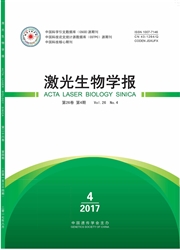

 中文摘要:
中文摘要:
5-氨基乙酰丙酸(5-aminolevulinate acid,ALA)在农业,工业,医药业具有广泛的应用。ALA由5-氨基乙酰丙酸合酶(5-aminolevulinate acid synthase, ALAS)催化产生,其生物合成受终产物血红素的反馈抑制。本研究克隆一种浑球红细菌的hemA基因,序列分析其与已报道的基因具有96%的同源性,蛋白质编码区域也发生改变,并利用生物信息学软件进行同源关系的分析。采用大肠杆菌重组技术,构建表达载体pET28a—hemA,表达了有活性的浑球红细菌(Rhodobacter sphaeroides)的ALAS,研究了IPTG诱导和PH对研究ALAS的影响,同时分析了重组菌株合成ALA的能力,测定胞外产量。结果表明,在PH6.5,30mmol/L琥珀酸和60mmol/L甘氨酸培养条件下,胞外ALA的最大合成量达到669mg/L。
 英文摘要:
英文摘要:
5-aminolevulinic acid (5-aminolevulinate acid, ALA) is widely used in agriculture, industry and pharmaceutical industry. ALA is catalysed by 5-aminolevulinate acid synthase (ALAS) , whose biosynthesis is feedback inhibited by its end product berne. In this study, we cloned hemA gene from Rhodobacter sphaeroides. The sequence analysis has a 96 % homology with reported gene and its protein-coding region also changed. We also used bioinformatics soft-ware for homology analysis. With E. coli recombinant techniques, we constructed a pET28a-hemA vector, expressed ALAS of active Rhodobacter sphaeroides and studied the impact of IPTG induction and PH on ALAS research. Also we studied the ability of ALA synthesis with recombinant strains and determined the extracellular ALA production. The result shows that in PH6.5, 30 mmol/L succinate and the 60 mmol/L glycine-culture conditions, the maximum synthesis of extracellular ALA reached 669 mg/L.
 同期刊论文项目
同期刊论文项目
 同项目期刊论文
同项目期刊论文
 期刊信息
期刊信息
